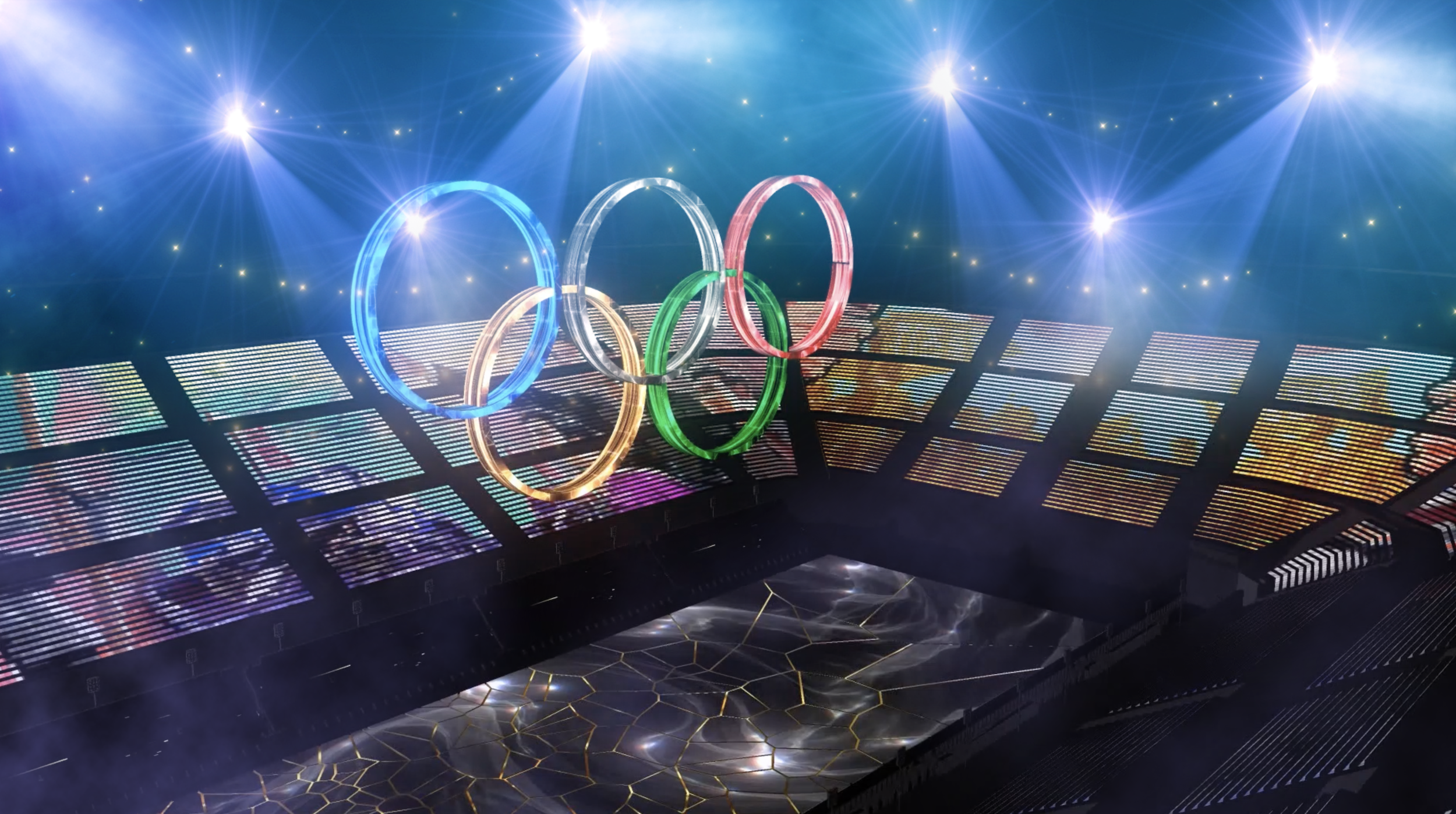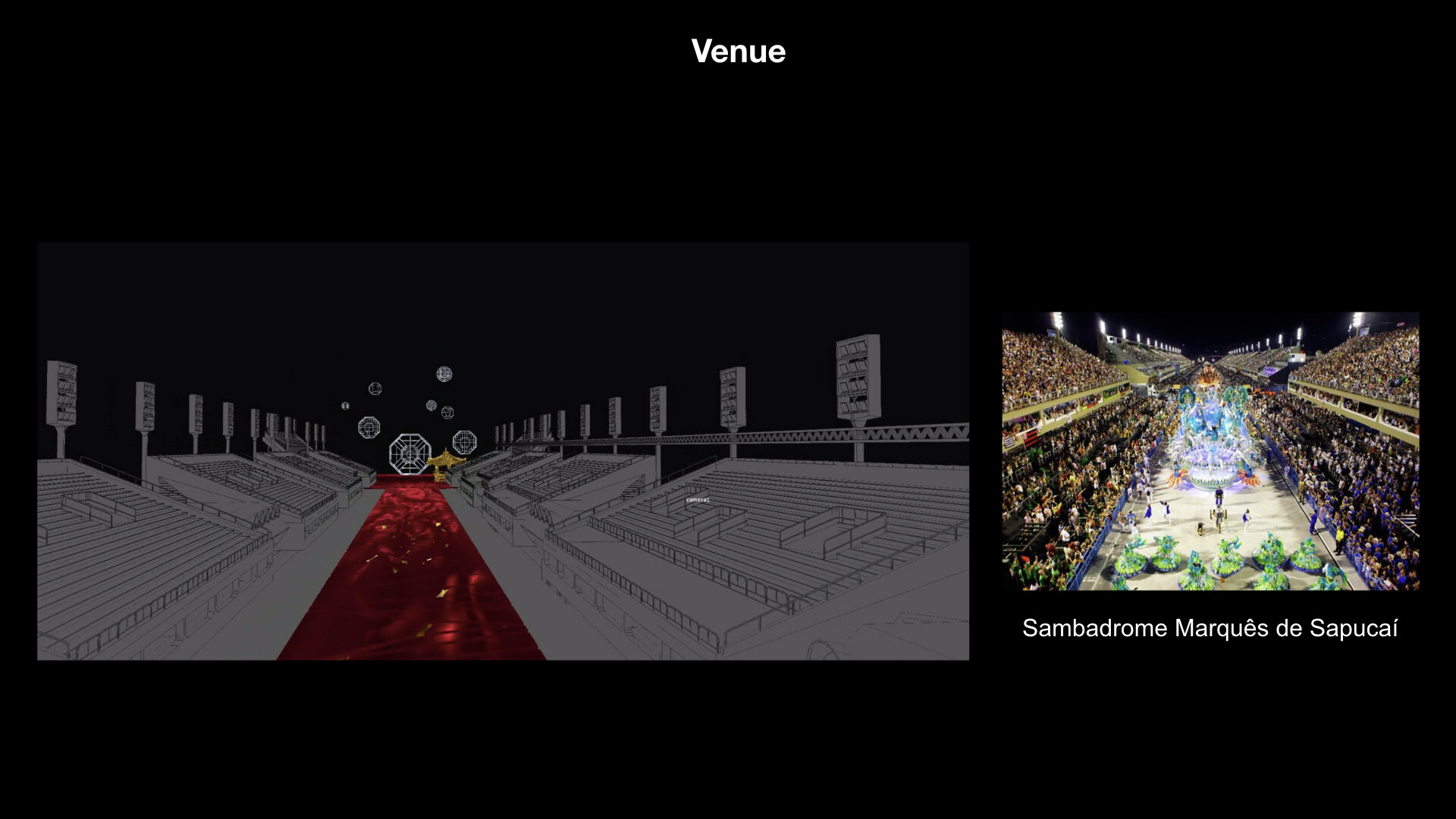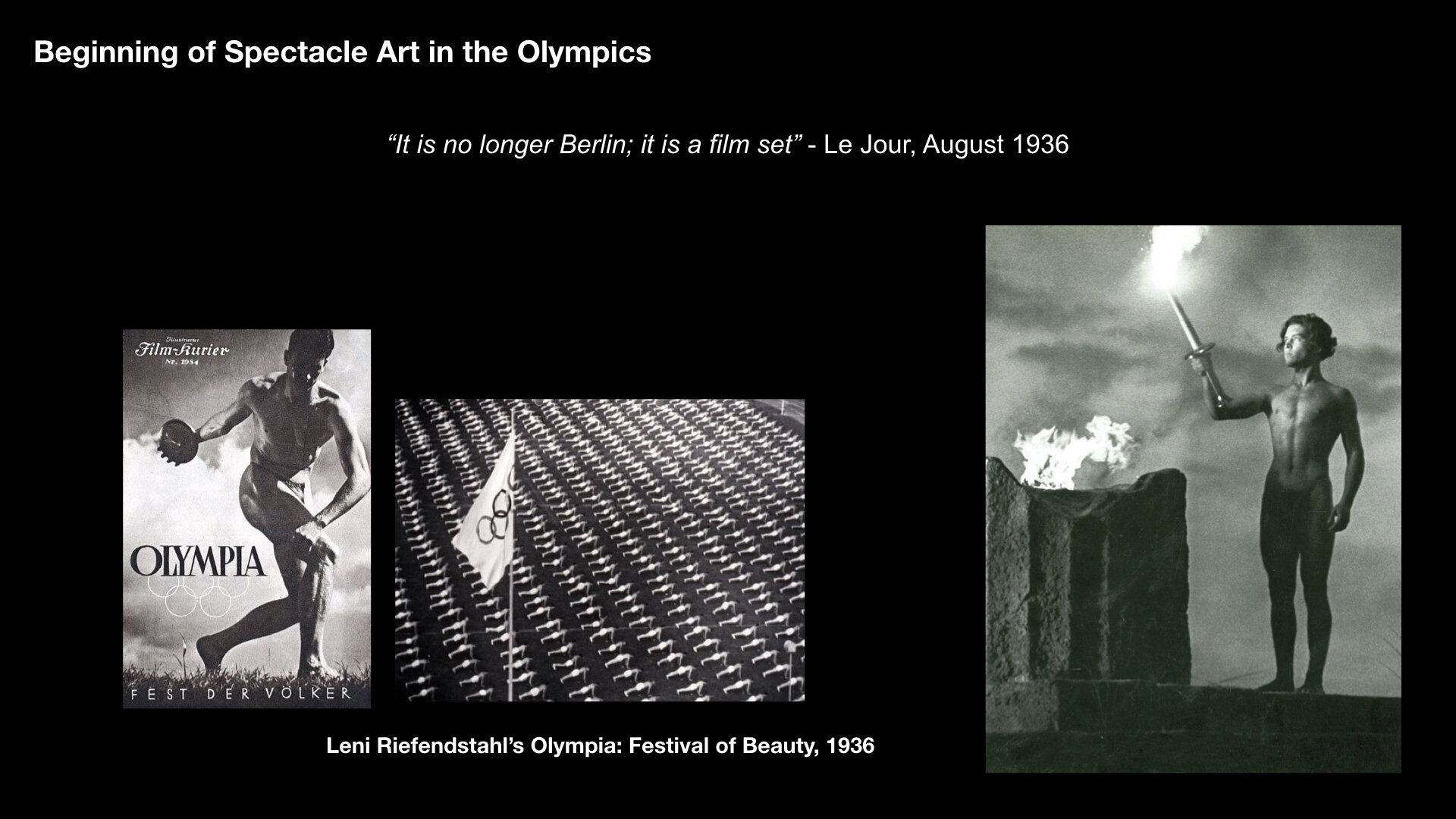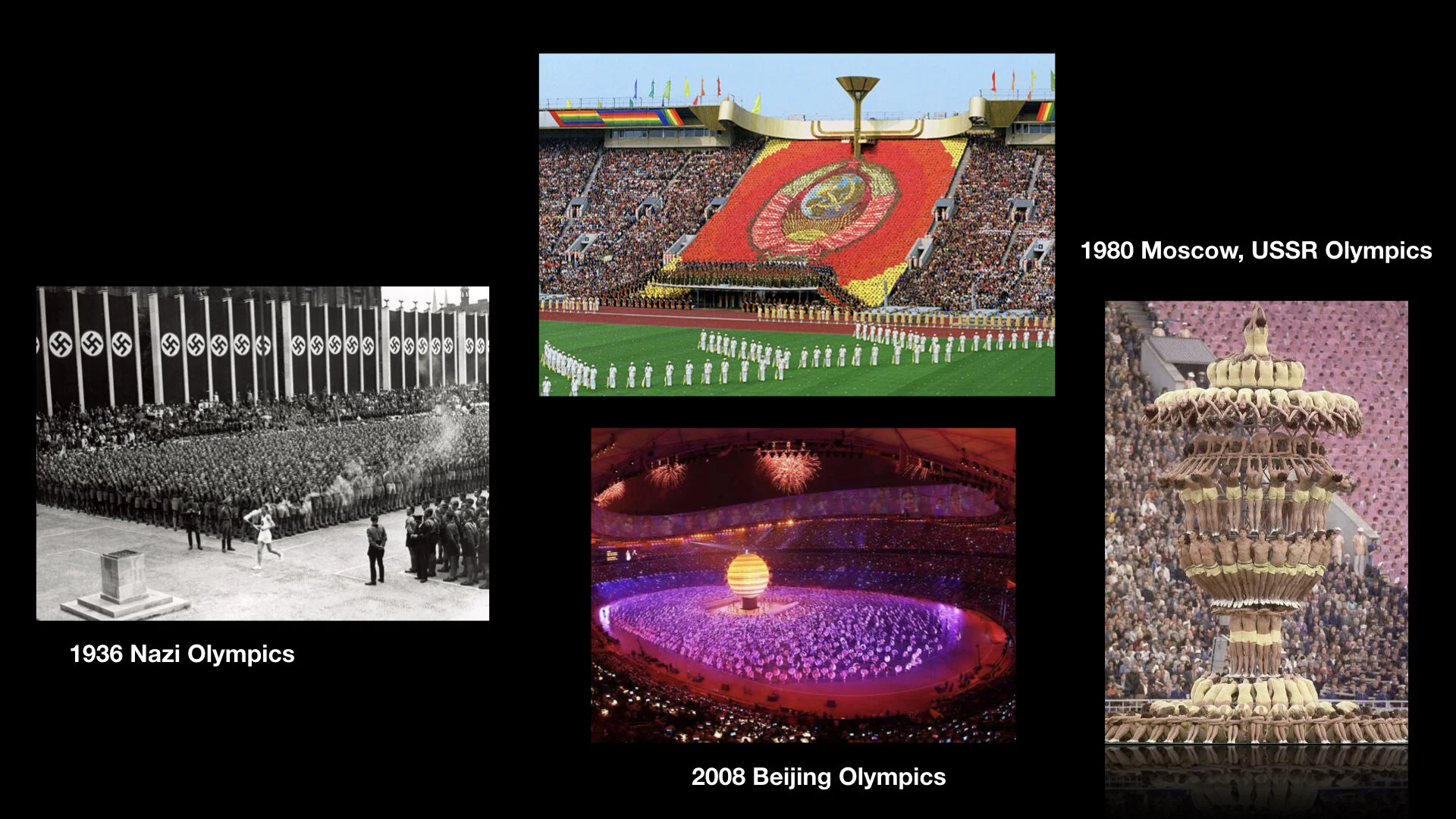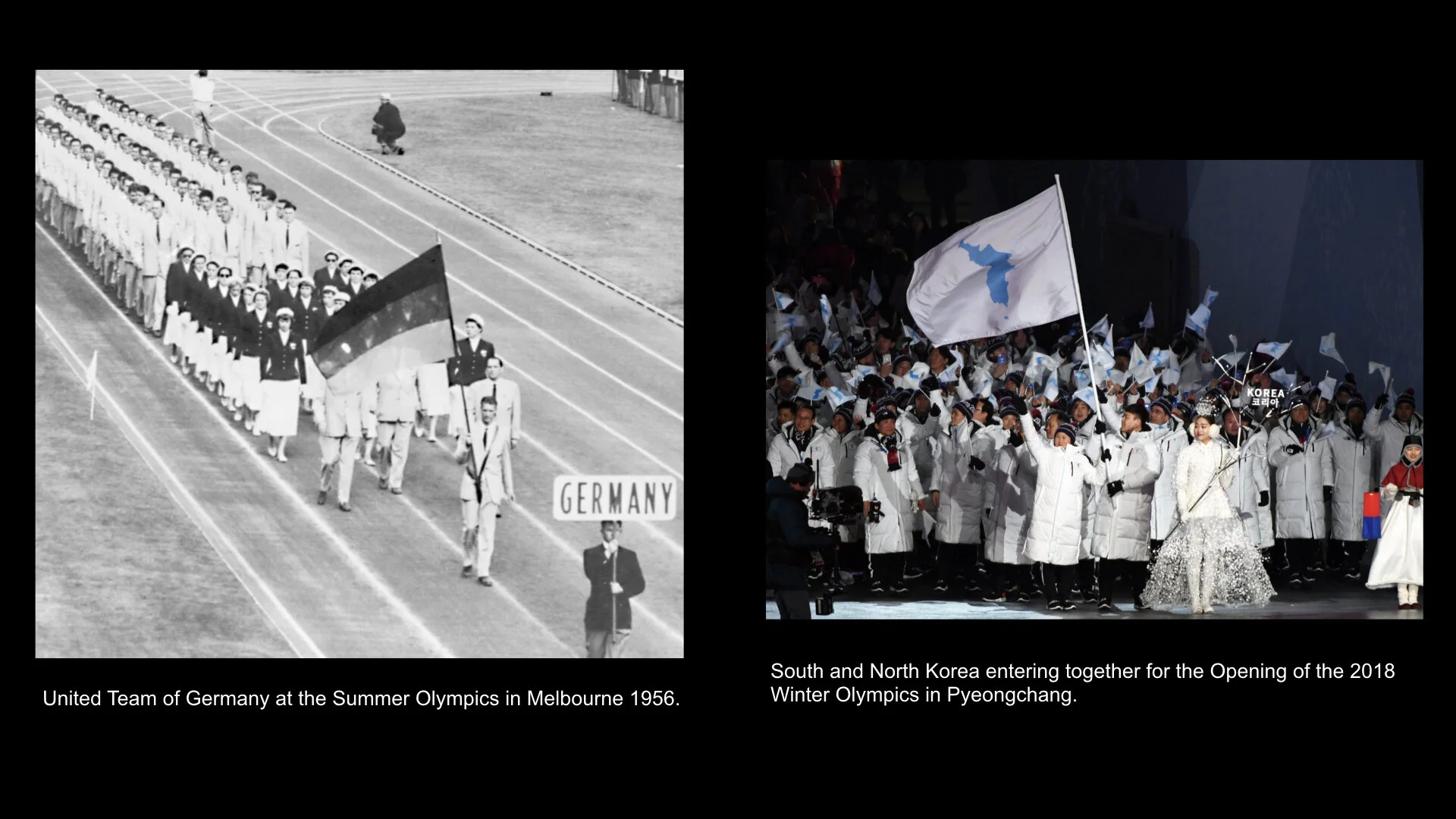Pre-visualization of the Opening Ceremony for
2032 Summer Olympics
Video & Media Design MFA Thesis, May 2020
Residency-in-Your-Room Fellowship: Juried grant from the CMU Frank-Ratchye STUDIO for Creative Inquiry, Spring 2020
Acknowledgements
I wish to express my deepest gratitude and profound thanks to my thesis committee:
Lawrence Shea, Associate Professor, Video & Media Design at Carnegie Mellon University.
Suttirat Anne Larlarb, Costume Designer, Art Director and Production Designer. Designer of the London Olympics 2012.
Robert Thomson, Associate Professor, Lighting Design at Carnegie Mellon University.
Along with the research process in the early phases of my thesis: Douglas Parachuk, Director of Design from Vancouver 2010 Winter Olympics. Leslie Frankish, Senior Production Designer of the Vancouver 2010 Winter Olympics.
Software: disguise, Cinema 4D, Blender, After Effects, Illustrator, Photoshop and Premiere
In the fall of 2018, the President of South Korea and the leader of North Korea released a public statement that both countries will pursue a bid on the Summer Olympics in 2032 as a joint host. Despite the fact that the two countries are technically at war under an armistice agreement for more than six decades, they proposed hosting the events in the two capital cities in each country, Seoul and Pyongyang. With celebrating world peace being one of the core missions of the Olympics, bidding together as a unified Korea was a powerful statement to the Olympic Committee and United Nations. If reunited “Korea” is selected by the International Olympic Committee (IOC), it would be a significant historical world event, as well as a substantial design challenge. For directors, producers and designers of the Olympics, the conjoining of such opposing factions will present a compelling and thought-provoking design process.
Olympic host nations have been inclusive of different political regimes, such as the 1936 Summer (Nazi) Olympics in Berlin, Germany, 1980 Summer Olympics in Moscow, Russia, and 2008 Summer Olympics in Beijing, China. Yet there has never been a joint-host nor a situation where two nations of two opposing political aesthetics collaborated together to stage a renowned international sporting event. For my thesis, I created a 3D pre-visualization video for the hypothetical 2032 Olympic opening ceremony hosted by the two Koreas as a joint host, with the main focus on the media design and performance aspects.
“Restoration” is the main theme of the Olympics 2032 Opening Ceremony.
The Pre-Show Countdown
This is the firm and significant gesture that marks the announcement of the two host countries as one, and the beginning of the Olympic ceremony for 2032 reminding the audience what we are about to witness.
For the launch of the Olympics Games 2032 opening ceremony, I envisioned the countdown as a moment of exchange of recognition between the two divided nations, awaiting to become one peninsula. As a reference to the 38th parallel North, the audience from North and South Korea would be sitting transversely in their side of the sectors. From the beginning of the pre-show, an elongated rectangular screen is situated in the center of the arena stage, functioning as two proscenium stages where each side of the nations would only face the screen. The cinematic orchestra track of “Spring in my Hometown” would start playing throughout the stadium as soon as the clock countdown expires.
Throughout the music, the screen is projected with the image of a grass field in black and white, slowly saturating into lively green. The imagery of green nature defines a sense of purity and forgotten time that confronts the current state of the two countries densely driven by technology - one country with nuclear weapons and the other one dominating the cyber, or the virtual, space. Towards the end of the music, the screen goes down to reveal the other side of the audience members and reassemble the stadium into one one stage again. I wanted the audience to perceive how North Korea and South Korea engage with each other and acknowledge their presence as the screen goes down, arousing with emotions and catharsis.
The Artistic Program #1
The Introduction of the Olympic Rings
To mediate the aesthetics of South and North Korea in the artistic program, as one has to do with consumer-based materialism and the other one coming from totalitarian in the practice of socialist realism, I approached my design by utilizing the images through the use of universal language. Images of nature is one of the universal depictions that has a shared quality of context in any implications. It can be expressed in a manner of realism but also formally defined as a metaphor for beauty.
The Parade of Athletes
It is the longest part of the opening ceremony that runs for two hours, introducing the entire athletes and nations who are participating in the Olympics Games.
The Parade of Athletes brings a different operation of the usage to the stage design. The design component in this protocol is intuitively integrated as a supporting mechanism to keep the presentation organized.
My inspiration for this work embarked with the keyword “people”, as it is the main essence of the parade and the Olympic Games in general. Further down the research, I geared my focus on the physicality of the human body because I realized that human gestures is a powerful universal body language that we all possess.
In response to Leni Riefenstahl’s Olympia, my determination reflected the stage as an homage to the beginning sequence of Festival of Nations (1936), but without the intention of Nazi reference. In the end, the Olympics started from the cultural practice of Greek athletes, in which all athletes should feel honored and welcomed in their entrance as a representative of their nations and to be part of the millenium of human tradition.
Research & Concept Sketches

